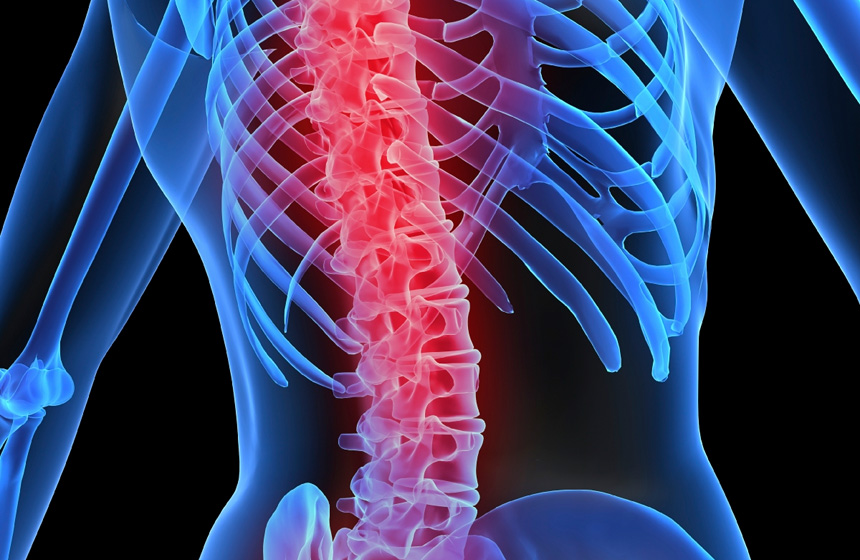Neolife medical management
Osteoporosis has a 27% higher incidence of morbidity-mortality in men than prostate cancer.
According to an article published in the International Osteoporosis Foundation, between 2010 and 2030 the increase in hip fractures among men will be over 50%, whereas its incidence will decrease by 3.5% in women over the same period.
One in 5 men over 50 years of age will suffer from a hip fracture at some point in his life. One third of hip fractures occur in men. It is expected that between 2010 and 2030 the increase in hip fractures among men will be over 50%, whereas its incidence will decrease by 3.5% in women over the same period. All this data has been published in a document presented by the International Osteoporosis Foundation, “Osteoporosis in Men, Why Change Needs to Happen” (1).
The reason behind why we need to change our attitude with regard to the prevention of osteoporosis in men, is that due to increased life expectancy the number of men over the age of 60 will multiply by 10 by the year 2050; along with the fact that the incidence of mortality in the year after suffering a hip fracture is 37% among men compared to 20% in women, which is almost double!

These unfavorable statistics concerning osteoporosis in men are related to the precise lack of interest in the prevention of this disease among healthcare professionals. No doubt you will know women who have already had a bone densitometry scan, but what about any men? There is no doubt when it comes to the importance of prostate cancer prevention, but few people are aware that the incidence of morbidity and mortality of osteoporosis in men is 27% higher than prostate cancer. Another recent study (2) has confirmed that once a man has been diagnosed with osteoporosis in the United States, the probability of that man getting treated for this disease is 50% less than if they were a woman.
Causes of osteoporosis
The International Osteoporosis Foundation has raised the alarm: “the time has come to take this disease seriously”, says Dr. Peter Ebeling, author of the above mentioned document and president of the Endocrine Society of Australia. This foundation leads the “Capture The Fracture” program.
As with many other biomarkers of health and aging, bone mineral density (BMD) starts to decrease from around the age of 25-30, as part of the process of “programmed senescence” and, as a result, we see the slow and progressive decrease in testosterone as well as that of the growth hormone/IGF-1 as we get older. It has been shown that the decrease in testosterone is between 1% to 2% per year. In addition, bad lifestyle habits – smoking, alcohol, low levels of Vitamin D, family history of osteoporosis, sedentary lifestyle, the use of certain medications such as anti-depressants and steroids – accelerate the process of bone decalcification. A 50-year-old man usually has 25% less BMD than his 20-year-old son.
However, the BMD peak that a young man reaches around the age of 19 is a determining factor in delaying the later onset of osteoporosis. A 10% higher BMD at this age is equivalent to 13 years less with osteoporosis. This is why they say that osteoporosis is “a pediatric disease with geriatric consequences” and as such, prevention ought to start in childhood, promoting exercise and ensuring the intake of calcium, protein and Vitamin D.
How to avoid osteoporosis
An adult man should maintain his BMD and avoid bone decalcification through strength training (weights) and high-intensity and high-impact cardiovascular exercise which are both essential. Developing and maintaining good muscle mass is fundamental to having a healthy skeleton. At least 3 exercise sessions a week. You should also maintain adequate calcium and Vitamin D levels and testosterone plasma levels above 300 ng/dL.
Neolife’s Age Management Programs fully address the need for prevention against osteoporosis, in both men and women. BMD is systematically measured by DXA scan during the very first check-up and we have found that a significant percentage of our patients with low BMD are in the range of osteopenia, which together with low Vitamin D levels (verging on epidemic levels) and sub-optimal testosterone values, the risk of suffering a fracture due to osteoporosis in the future is increasingly high. Correcting these levels allows us to slow down the rate of decalcification and often reverse the process, increasing BMD.
References
(1) Osteoporosis in men: Why change needs to happen
(2) https://onlinelibrary.wiley.com/doi/10.1002/jbmr.2202/abstract
